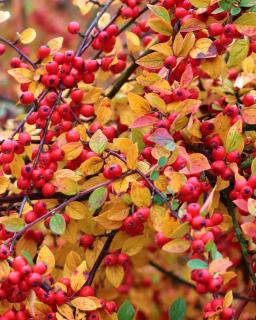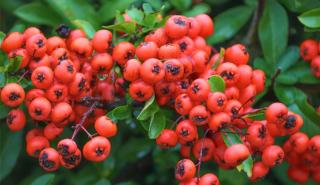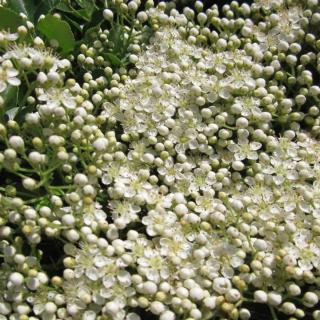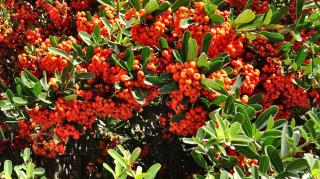

Firethorn, a shrub with superb foliage, also bears magnificent colored berries in fall.
A few Firethorn facts
Name – Pyracantha
Family – Rosaceae
Type – shrub
Height – 6 to 13 feet (2 to 4 meters)
Exposure – full sun, part sun
Soil: ordinary – Foliage: evergreen – Flowering: end of spring, early summer
It’s all the same whether firethorn is planted in spring or fall, even though planting in November is best.

Making cuttings in summer is the easiest and fastest option for propagating Pyracantha.
 Collect your 6-inch (15 cm) cuttings at the end of summer on semi-hardened wood.
Collect your 6-inch (15 cm) cuttings at the end of summer on semi-hardened wood.Very hardy to the cold and freezing, resilient after sweltering heat, firethorn is a shrub that only needs little care, especially after it has properly settled in.

Important: Pyracantha blooms on stems grown during the previous year. This means that severe pruning will result in one year with very few blooms (and berries).
The main difficulty you’ll face with firethorn is fire blight. Leaves turn brown, dry off and die within a few months.
As for parasites, it may attract legions of aphids and here is how to deal with aphids.
A thorny shrub belonging to the Rosaceae family, a further advantage is its rapid growth and its deep dark green evergreen leaves.

Fall is when it is most remarkable, as it bears little ornamental red or orange-yellow berries.
Its blooming, in spring, is low-key, cute white flowers that appear during the month of May or June, depending on the area.
Berries aren’t toxic to humans, contrary to popular belief. Some even include the berries in jams, too.
As with many edible wild berries, though, eating significant amounts (a bowlful or more) can lead to an upset stomach (light diarrhea).
Research has shown that tiny, minute amounts of cyanide-related compounds exist in fruits. Luckily, the quantities are so small that these won’t have any impact whatsoever on either humans or pets.
Read also:
Since it is thorny, it is perfect for defensive hedges.
Firethorn berries are not poisonous. My parents had them and I ate them as a child. They have a mild, but pithy apple taste with more seeds than fruit. The fruit is grainy. My siblings and I never experienced any tummy troubles or other adverse effects. At first my mother was concerned and asked our doctor. He looked it up right then and assured her we would be fine.
Hi Millie, thanks a lot for your comment, I went back and changed the article after completing a little more research. As I was a child, I was taught to steer clear of the appealing red berries – I think in people’s minds it’s to help children avoid nibbling other red berries that are more dangerous, like holly berries which also has pricks everywhere, or yew.